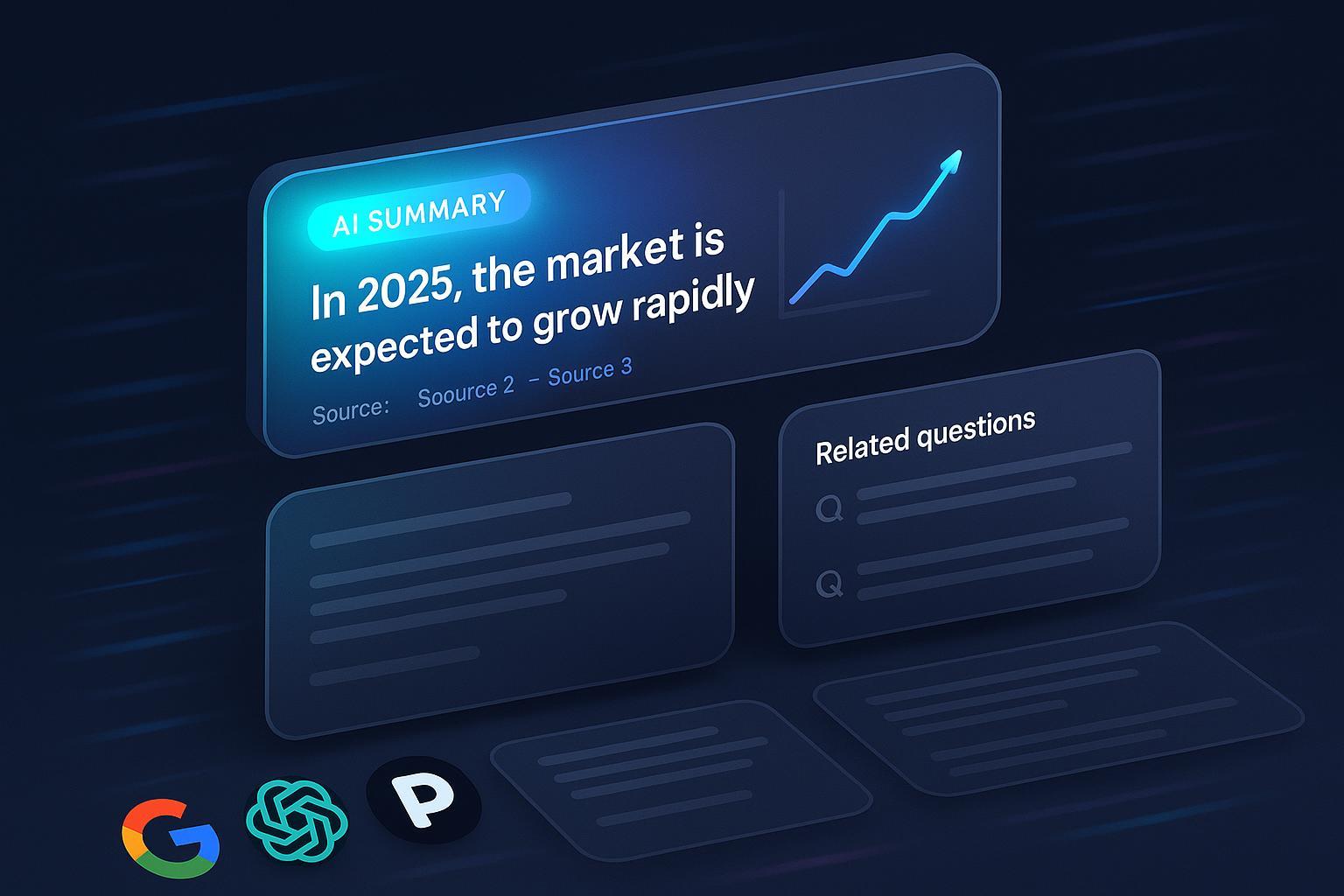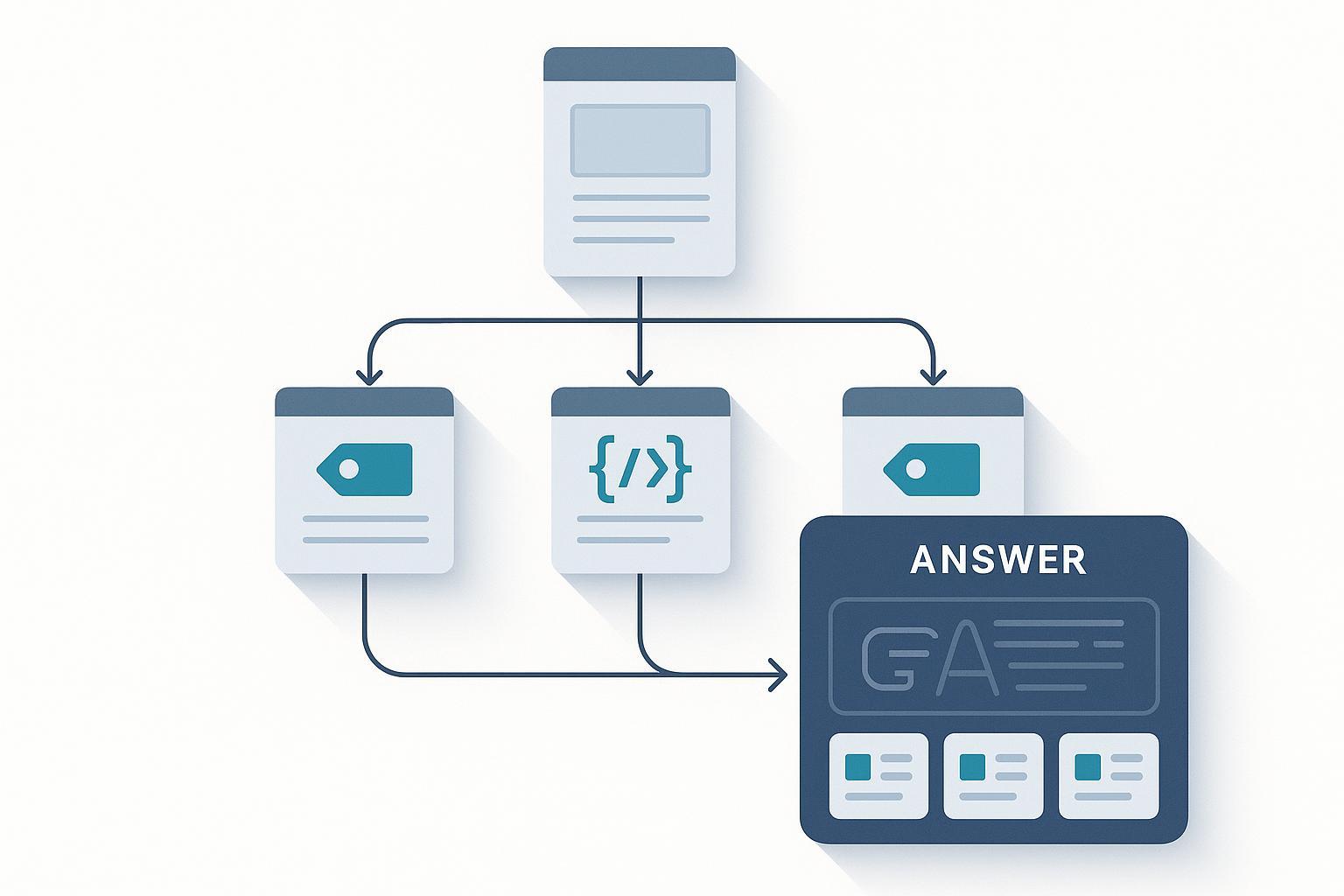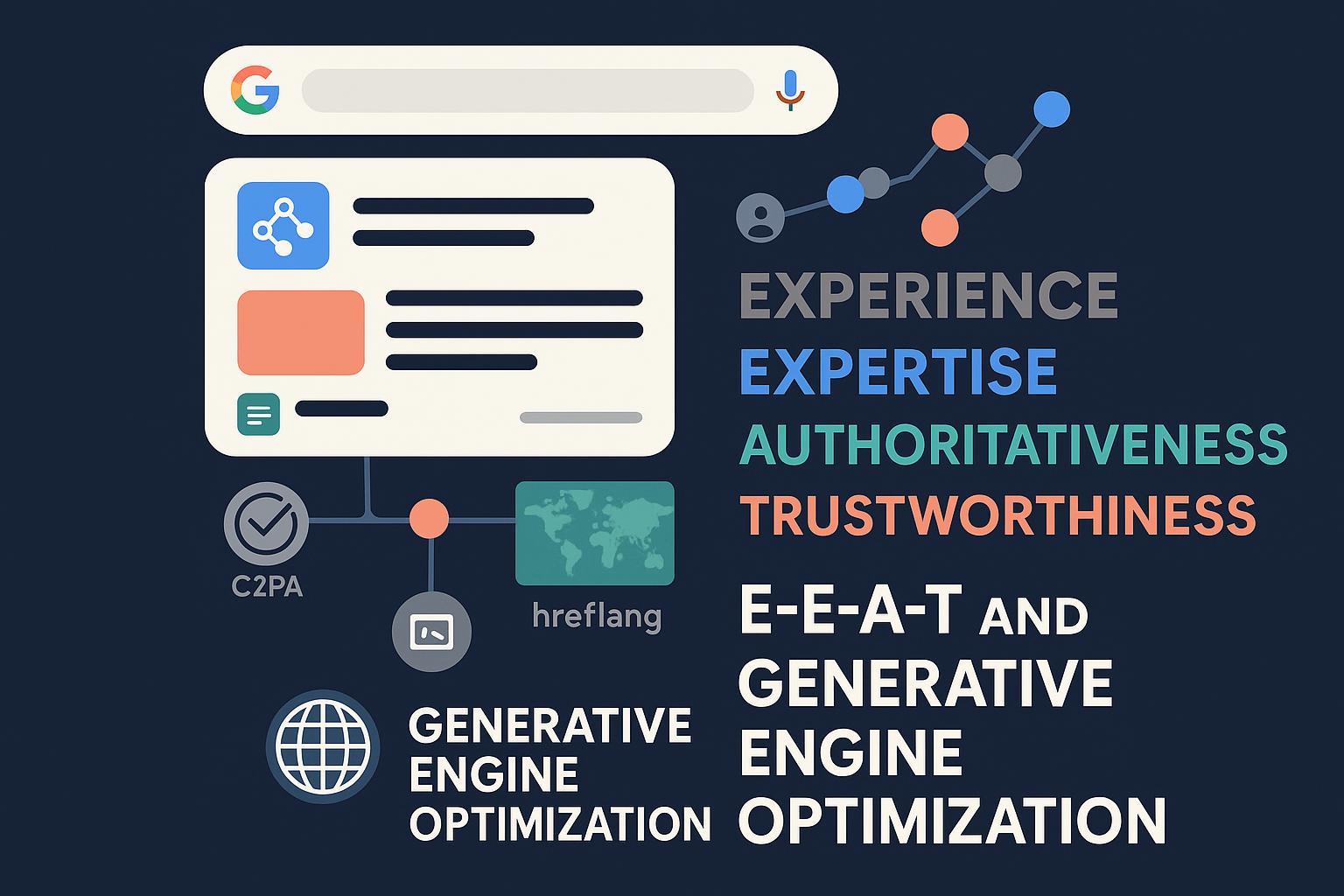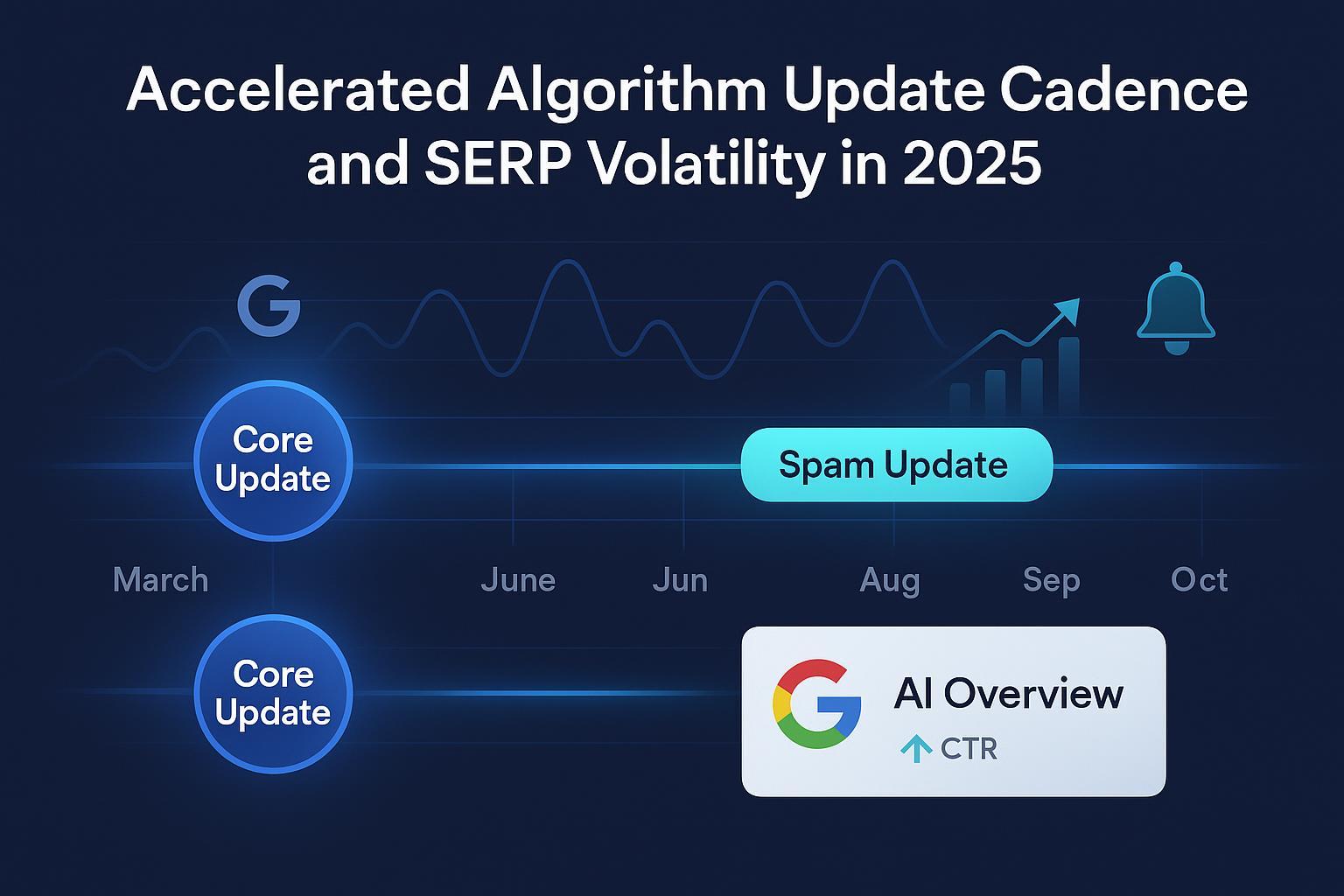$6B GEO Market Explosion 2025: Optimize for AI Search Now
Discover the 2025 boom in GEO and learn proven strategies to get cited by AI search engines. Stay competitive—refresh your content and KPI tracking.


Updated on 2025-10-05
AI-powered answer engines are reshaping discovery. The oft-cited “$6B GEO market” is a forward-looking signal, not today’s reality: recent estimates valued the Generative Engine Optimization services market at roughly US$886 million in 2024, with forecasts approaching US$7.3 billion by 2031, reflecting a ~34% CAGR, according to the Valuates Reports coverage on OpenPR in 2025. See the market context in the Generative Engine Optimization services forecast by Valuates (2025).
Why this matters now
Two structural shifts are converging:
- AI summaries are showing up more often. Semrush reported that in March 2025, about 13.14% of U.S. queries triggered an AI Overview, up from 6.49% in January 2025, based on analyses of millions of keywords and 200,000 AI Overviews. See the Semrush AI Overviews impact study (2025).
- When AI summaries appear, users click fewer links. In an April 2025 dataset of 68,879 Google queries with 12,593 AI summaries observed among 900 U.S. adults, Pew Research found link-click likelihood dropped to 8% when an AI summary appears versus 15% when it does not, and roughly 1% clicked links inside the summary. See Pew Research Center: link clicks with AI summaries (2025).
The implication is clear: whether you’re a CMO, SEO lead, or content editor, you must optimize for how AI systems read, synthesize, and cite your content—without abandoning classic SEO.
What GEO is (and how it complements SEO and AEO)
Generative Engine Optimization (GEO) focuses on improving your visibility within AI-driven answer engines—systems that compose responses, often with citations, rather than returning ten blue links. The paradigm was formalized by researchers in 2023–2024 as a black-box optimization approach with a benchmark for visibility. See the academic framing in Aggarwal et al., “GEO: Generative Engine Optimization,” KDD 2024 and the accessible explainer “What is generative engine optimization (GEO)?” by Search Engine Land (2024).
GEO does not replace SEO. It layers on top of strong technical SEO and intersects with Answer Engine Optimization (AEO) by prioritizing answerability, entity clarity, evidence, and freshness that models can confidently summarize and cite.
The GEO playbook for 2025
Here’s a practitioner-grade workflow to earn visibility in AI answers while strengthening classic search performance.
1) Answerability engineering
- Start with a compact answer block (40–60 words) that directly addresses the query. Follow with a deeper explanation and examples.
- Break complex topics into scannable sections that mirror conversational sub-questions.
- Add a short “Do/Don’t” list to help models summarize trade-offs reliably.
- Include FAQs that mirror real user questions; mark them up with FAQ schema.
2) Entity clarity and schema discipline
- Disambiguate your brand, products, and authors with consistent names and aliases. Add Organization, Person, and Product schema where applicable.
- For tasks and tutorials, use HowTo and Article schema. For reviews, include Review schema with clear criteria and authorship.
- Maintain a canonical glossary of key entities and link internally to authoritative definitions to help models resolve references.
3) Evidence binding and citation-worthiness
- Anchor key claims to authoritative, timestamped sources using descriptive anchor text. Favor primary research, official docs, and recognized industry reports.
- Publish original data or methodologies when possible; explain sample sizes, periods, and limitations.
- Surface update dates prominently and maintain an “Updated on {date}” line on fast-moving posts.
4) Platform nuances that matter
- Google AI Overviews and AI Mode: Google notes that AI Overviews use a customized Gemini model alongside existing ranking systems and the Knowledge Graph. Align to quality signals and structured data. See Google Search Central: AI features and your website (2025) and Google on AI Mode and query fan-out (2025).
- Perplexity: Answers typically include inline citations; keeping content updated, well-structured, and crawler-accessible improves discoverability. See the Perplexity getting started guide (2024).
- ChatGPT/Gemini: Emphasize authoritative, comprehensive, and well-structured resources; clearly labelled sections and sources increase reference-likelihood. Cross-check with Google’s AI features guidance cited above.
5) Community authority signals
- Mentions and citations from expert communities can influence model selections. If community-driven insights are relevant for your category, see our breakdown of tactics in Driving AI search citations through Reddit communities.
Measurement: From traffic-only to AI-first visibility
Clicks and rankings still matter, but AI answer inclusion is becoming a leading indicator. Establish KPIs that reflect this reality:
- AI inclusion rate: The percentage of tracked queries where your brand or content is included in AI Overviews or cited by an answer engine.
- Citation velocity: The number of new citations per week across AI engines; monitor spikes around updates or content refreshes.
- Sentiment shift: Net sentiment of AI-referenced mentions of your brand over time.
- Update velocity: Average days between updates on your high-velocity topics.
Practical cadence: Review these metrics weekly during rollout, then biweekly. For context on the evolving AI search landscape and rollouts, consult the SE Ranking AI Overviews explainer and timeline (2025).
A neutral workflow example: Standing up AI citation monitoring
A typical enterprise team sets up a research board of 50–200 queries spanning brand, product, and category questions. They log baselines for AI inclusion and citations across Google AI Overviews, ChatGPT, and Perplexity, then instrument change tracking.
- Step 1: Capture the baseline. Record inclusion rate, cited URLs, and sentiment snapshots across engines.
- Step 2: Ship improvements. Add compact answer blocks, clarify entities, implement FAQ/HowTo schema, and bind claims to authoritative sources.
- Step 3: Monitor change. Track citation velocity and sentiment shifts post-update; prioritize pages with rising opportunity or declining presence.
In practice, teams often centralize this tracking in a dedicated monitor. For example, some teams use Geneo to watch brand citations and sentiment across ChatGPT, Perplexity, and Google AI Overviews, including historical query snapshots and content suggestions. Disclosure: Geneo is our product.
Alternatives and complements include keeping a spreadsheet plus periodic manual audits or evaluating other monitoring tools. For landscape context, see our neutral comparison in Profound vs. Brandlight for AI brand monitoring and a detailed Profound review with alternatives (2025).
Action checklist for teams
- Prioritize 20–40 high-intent and high-ambiguity queries for GEO pilots.
- Draft compact answers and FAQs; add schema and entity disambiguation.
- Bind every major claim to a credible, timestamped source; add “Updated on {date}.”
- Open your site to reputable crawlers and ensure fast, stable performance.
- Stand up monitoring for AI inclusion, citations, sentiment, and update velocity.
- Refresh monthly on fast-moving topics; keep a mini change-log per page.
Frequently evolving facts to track
- AI Overview trigger rates by category and geography (revisit Semrush or similar datasets).
- CTR changes and referral shifts as AIO expands (Pew and industry panels).
- Google core/spam updates and any expansions of AI Mode or Discover integrations. Google’s official guidance is here: AI features and your website (Search Central, 2025).
Mini change-log template
- 2025-10-05 — Initial publication with Semrush (AIO prevalence), Pew (CTR), Google AI Mode, and market sizing citations.
- 2025-11-10 — Next planned review: refresh AIO trigger rates, update any CTR findings, and capture Google announcements.
A balanced outlook
AI summaries are absorbing more attention, compressing clicks, and redistributing demand. The winning response is not to abandon SEO, but to build GEO capabilities that raise your odds of being summarized and cited—answer-first content, entity clarity, rigorous evidence, and disciplined monitoring. The GEO market may not be $6B today, but the trajectory is unmistakable.
If you need a centralized way to monitor multi-platform AI citations and sentiment as you iterate, consider exploring Geneo’s approach alongside your existing analytics stack.
References used in this article include the Valuates/OpenPR GEO forecast (2025), Semrush’s AI Overviews studies (2025), Pew Research on link-click behavior (2025), Google’s official AI Mode and AI features documentation (2025), and SE Ranking’s AI Overviews explainer (2025). For a broader set of GEO/AEO insights and practical guides, you can browse the Geneo blog index.





